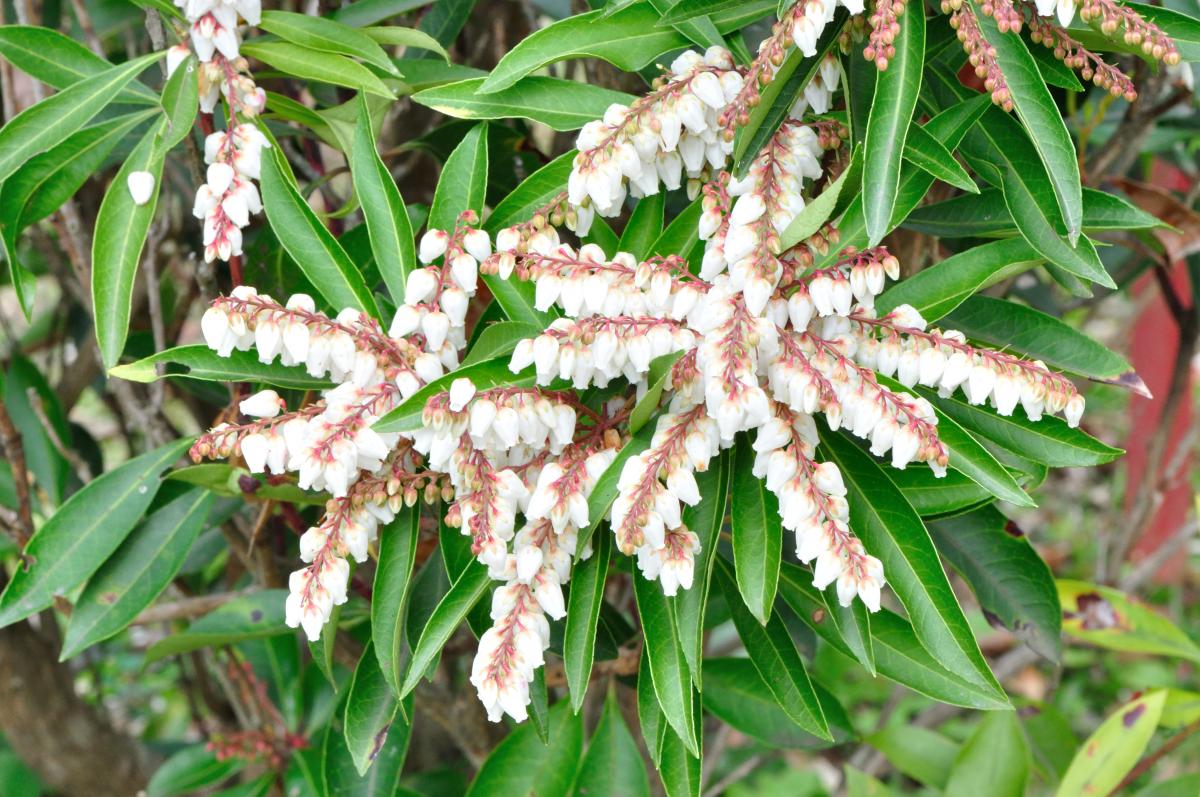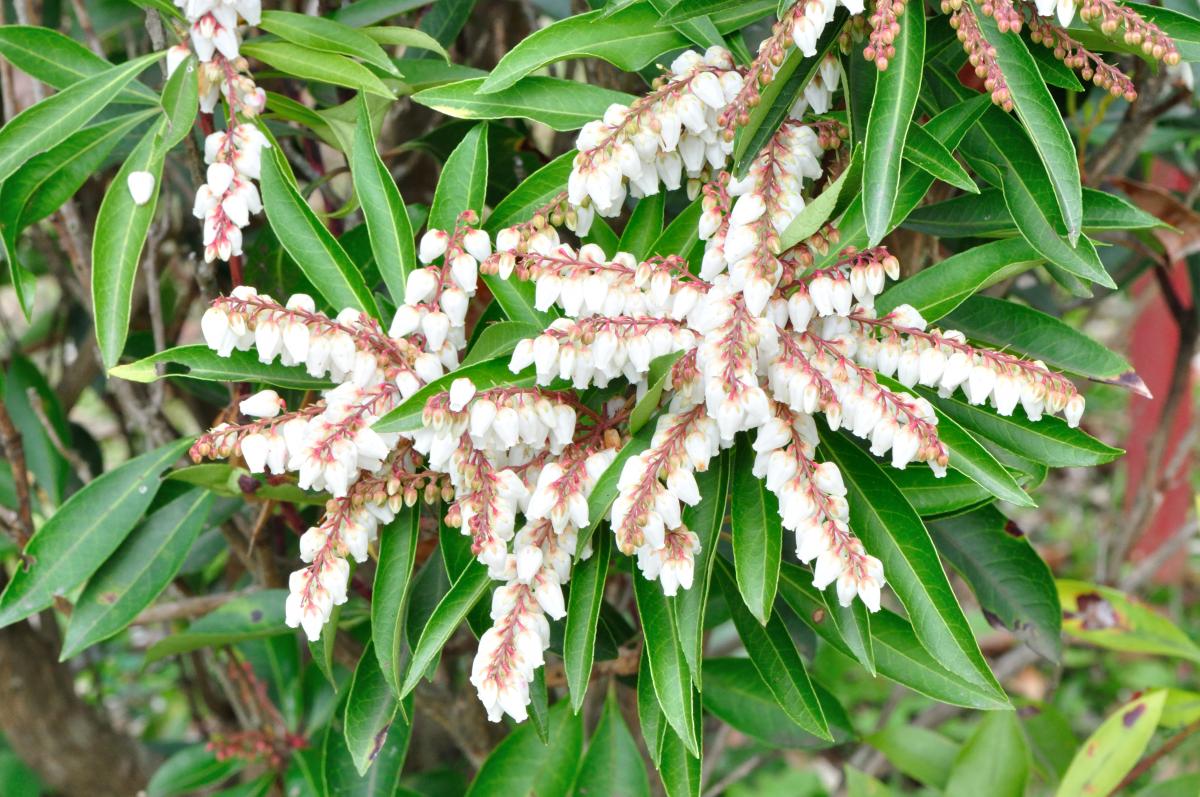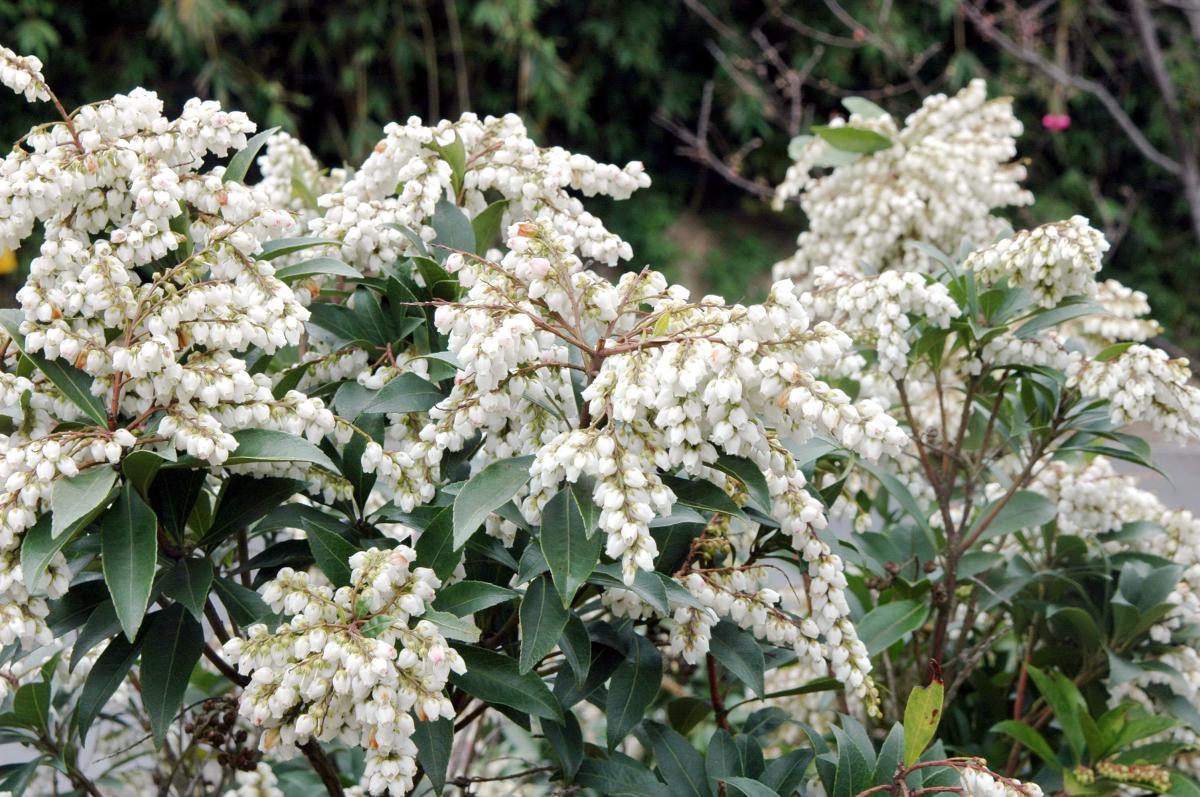杜鵑花科
學名:Pieris japonica (Thunb.) D. Don ex G. Don
英名:Pieris、Japanese Andromeda
別名:梫木
臺北典藏植物園中最受矚目的明星植物之一,因為植物體內蘊含毒素,連高大的馬匹誤食葉子都會呈現酣醉的模樣,因此而得名。古人會採集葉片泡水,製作簡單的農藥用來防治蟲害。春季開花時,白或淺粉色朵懸垂有如成串小鈴鐺,形狀非常可愛。春夏之交長出的紅色新葉也相當美觀,在溫帶地區或臺灣北部與中海拔山區,作為景觀植物栽培。
Pieris is one of the most eye-catching plants in the Taipei Collectible Botanical Garden. The plant contains toxin, even tall horses will get drunk if they accidentally eat the leaves, hence the Chinese name. The ancients collected the leaves, soaked them in water to make simple pesticides to repel insects. When blooming in spring, the white or light pink flowers droop like strings of small bells, very adorable. New red leaves emerging at the turn of spring and summer are also highly ornamental. They can be cultivated as landscape plants in temperate regions or northern and mid-altitude mountainous areas of Taiwan.
馬醉木屬常綠灌木或小喬木,原產日本、臺灣及中國華東各省。革質橢圓披針形葉互生,常密生於枝端。總狀花序或圓錐花序頂生或腋生,白或淺粉紅壺形花下垂,蒴果扁球形。開花期春季。
An evergreen shrub or small tree in the genus Pieris, indigenous to Japan, Taiwan and China's eastern provinces. Leathery elliptic lanceolate leaves are alternately arranged and often grow densely at the end of branches. Racemes or panicles emerge in the terminal or axils. White or light pink pot-shaped flowers droop. The capsules are in oblong shape. Bloom in spring.
全日照或半日照環境,避免種植於烈日曝曬高溫處。夏季高溫期注意適時澆水。春、秋季各施用一次長效性肥料。開花後修剪殘花,避免結果耗損養分。繁殖使用扦插、空中壓條法。
It grows best in a full-sun or partial shade environment but needs to be away from scorched sun and heat. Attentive on watering in high summer. Apply long-active fertilizers once in spring and autumn. Remove spent flowers after blooming to avoid exhausting nutrients for fruiting. Propagated by cuttings and air laying.
植株有毒少有病害,生長強健且花朵與新葉美觀,在溫帶地區栽培普遍,公園、街道旁綠地都有種植。因為枝葉繁密且萌芽力強,多種植成綠籬或是修剪成整型灌叢。馬醉木葉片自古就當作農藥使用,可殺蚜蟲、紅蜘蛛等小型害蟲。
The plant is poisonous thus resistant to pest infestation. Its vigorous growth, esthetic flowers and young leaves invite broad plantation in temperate regions, so the plant is very common in parks and roadside green space. Thanks to the dense and thriving branches and leaves, it’s a great plant as hedgerows or trimmed into topiary shrubs. The leaves also have a long history as pesticides to kill small insects such as aphids and spider mites.



